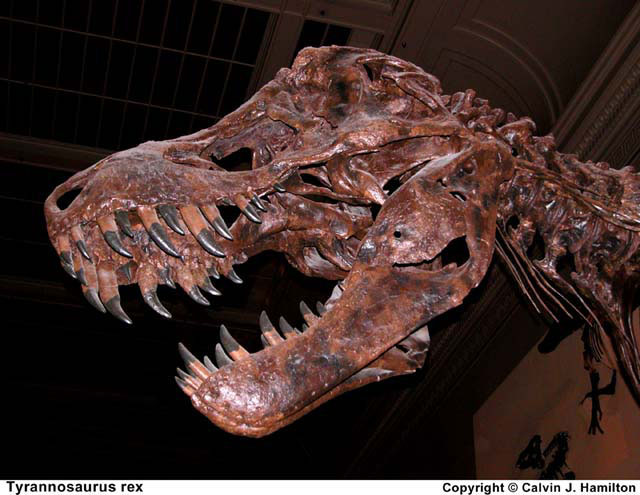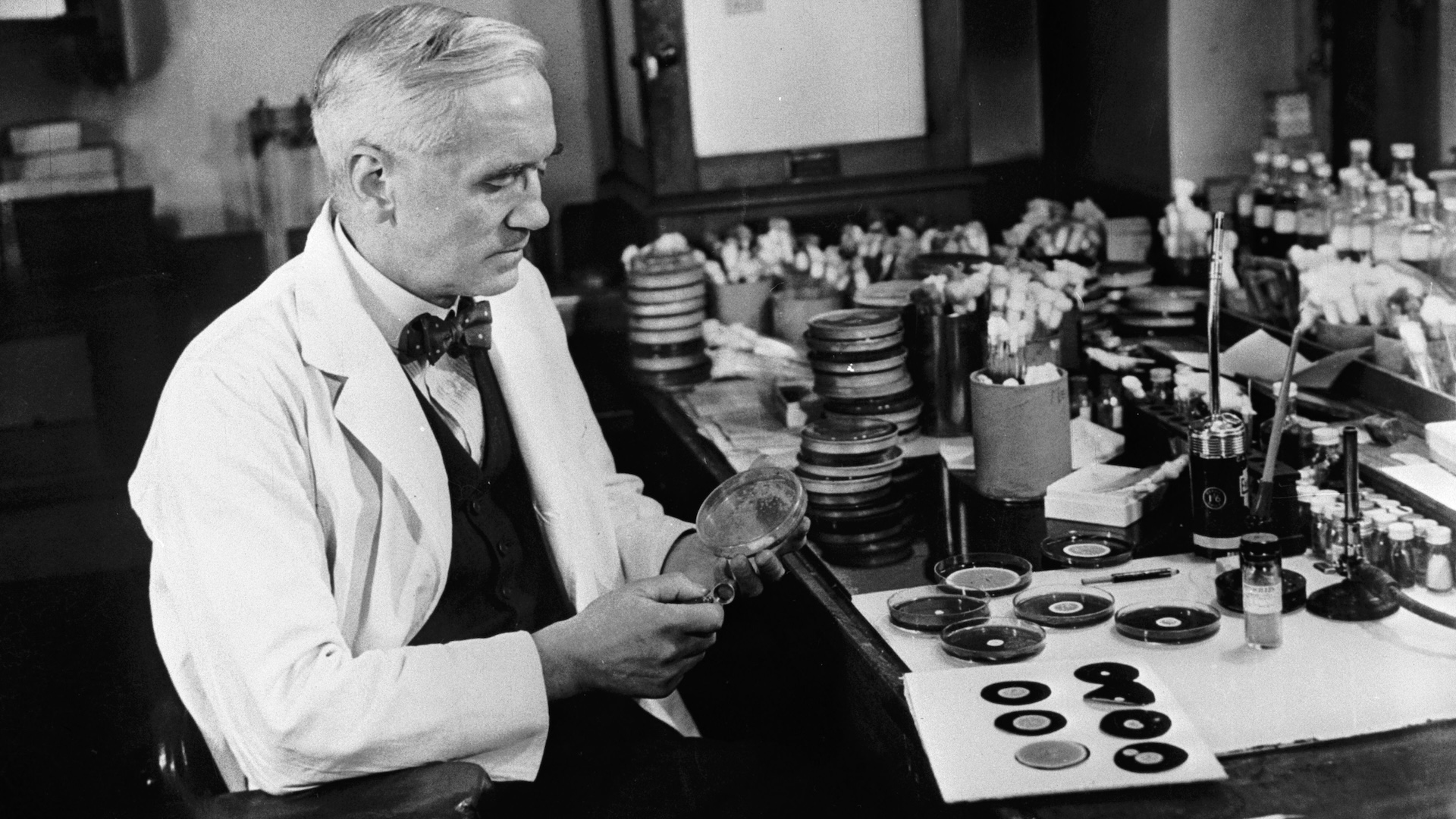T. Rex's Secret Weapon Discovered

A paleo-bully of sorts, a Tyrannosaurus rex could chomp down on prey with the force needed to lift a semi-trailer, tearing apart a victim’s bones. Now researchers have discovered the dino’s secret weapon: it was hard-headed.
"Fused, arch-like nasal bones are a unique feature of tyrannosaurids," said lead scientist Eric Snively of the University of Alberta. "This adaptation, for instance, was keeping the T. rexes from breaking their own skull while breaking the bones of their prey."
Tyrannosaurids are known to have robust teeth and skulls as well as enlarged areas for attachment and expansion of jaw muscles, which suggests they swiftly crush the flesh and bones of prey. And though other researchers had noticed T. rex’s fused nasal bone, how the feature added to the animal’s brute strength or what role it played had remained a mystery.
The new study, published in the journal Acta Palaeontologica Polonica, used 21st century technologies to look at the biomechanics of the ancient creatures.
Bone crunch
Snively and his colleagues, including physicist Donald Henderson of the Royal Tyrrell Museum in Alberta and Doug Phillips of the University of Calgary, compared the skulls and teeth of a number of tyrannosaurids to non-tyrannosaurids.
They used computed tomography (CT) scans to look at such structural mechanics factors as teeth-bending strength and nose and skull strength. The nasal bones form a sort of arch atop the tooth-bearing bones of the upper jaw and take a hit whenever a dinosaur bites down.
Sign up for the Live Science daily newsletter now
Get the world’s most fascinating discoveries delivered straight to your inbox.
The CT scans showed that the fused tyrannosaurid nasals were stronger than unfused nasal bones found in other carnivorous dinosaurs. “When T. rex bit down, the forces from the upper teeth would be channeled right to the [fused] nasal bones,” Snively said. The resulting bite would have splintered the bones of unlucky prey.
For a non-tyrannosaurid but still carnivorous dinosaur with unfused nasal bones connected with stretchy ligaments, some of the bite force would cause the nasal bones to give a little and slide against each other. The flexing would zap some of that dinosaur’s bite energy.
“Because the nasals [of T. rex] were fused, all of the bite force was transmitted to the food instead of some of the force being distorting the skull,” Snively said. "The T. rex especially had a very strong skull and jaw muscles that would turn it into a zoological superweapon.”
Perfect ingredients
T. rex would likely not back down from bigger beasts either. A medium-sized T. rex boasted even more skull strength than a larger carnivorous creature, such as the Carcharadontosaurus saharicus dinosaur, whose head was about one and a half times as long as that of T. rex.
The scientists used conservative estimates of muscle force when comparing the overall strengths of the animals. "We kept the muscle numbers down because we thought they couldn't possibly be that powerful,” Snively said. He noted that colleagues at the Tyrrell museum have shown that a T. rex's lower jaw could apply 200,000 newtons of force, or enough strength to lift a tractor-trailer.
With that whopping bite, sometimes T. rex likely got its deeply-entrenched teeth stuck in prey. “If the teeth were embedded in the prey and T. rex wasn’t able to extract the food, it couldn’t eat very well,” Snively told LiveScience.
That’s why, Snively suggests, T. rex had such a powerful neck. In a split second, the dino could swing its head and toss large chunks of meat up and into its throat. The scientists calculated that a T. rex could fling a 100-pound person more than 15 feet into the air.
The tossing power also meant T. rex could tear from side to side, ripping chunks of meat from another dinosaur. “The tossing showed us how easily T. rex could feed; it would toss food back in the throat,” Snively said. “But the overall power also shows us how T. rex could remove flesh and bone from prey.”
He added, “All of the T. rex's features came together to give it the strongest bite of any land animal. The T. rex just blows everyone out of the water when it comes to strength.”
- All About Dinosaurs
- Image Gallery: Dinosaur Fossils
- The Biggest Carnivore: Dinosaur History Rewritten
Jeanna Bryner is managing editor of Scientific American. Previously she was editor in chief of Live Science and, prior to that, an editor at Scholastic's Science World magazine. Bryner has an English degree from Salisbury University, a master's degree in biogeochemistry and environmental sciences from the University of Maryland and a graduate science journalism degree from New York University. She has worked as a biologist in Florida, where she monitored wetlands and did field surveys for endangered species, including the gorgeous Florida Scrub Jay. She also received an ocean sciences journalism fellowship from the Woods Hole Oceanographic Institution. She is a firm believer that science is for everyone and that just about everything can be viewed through the lens of science.










